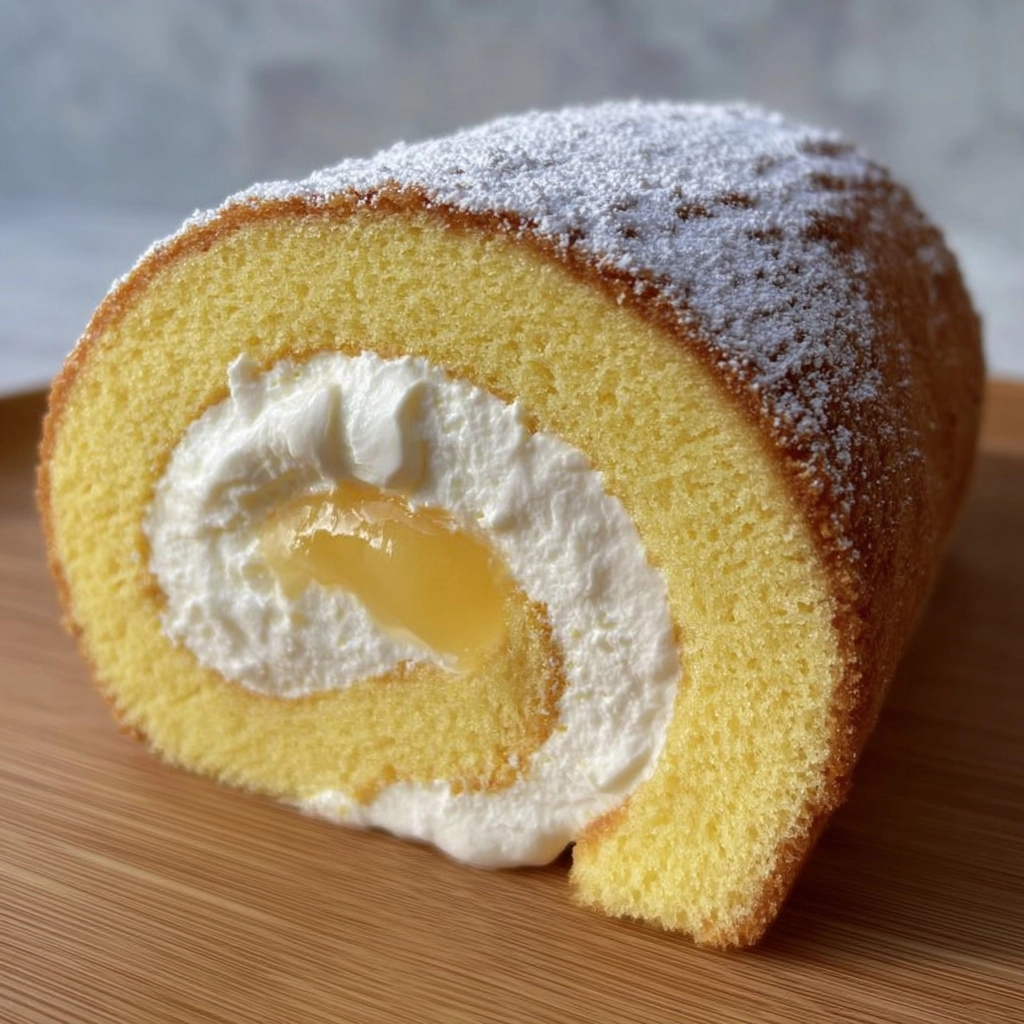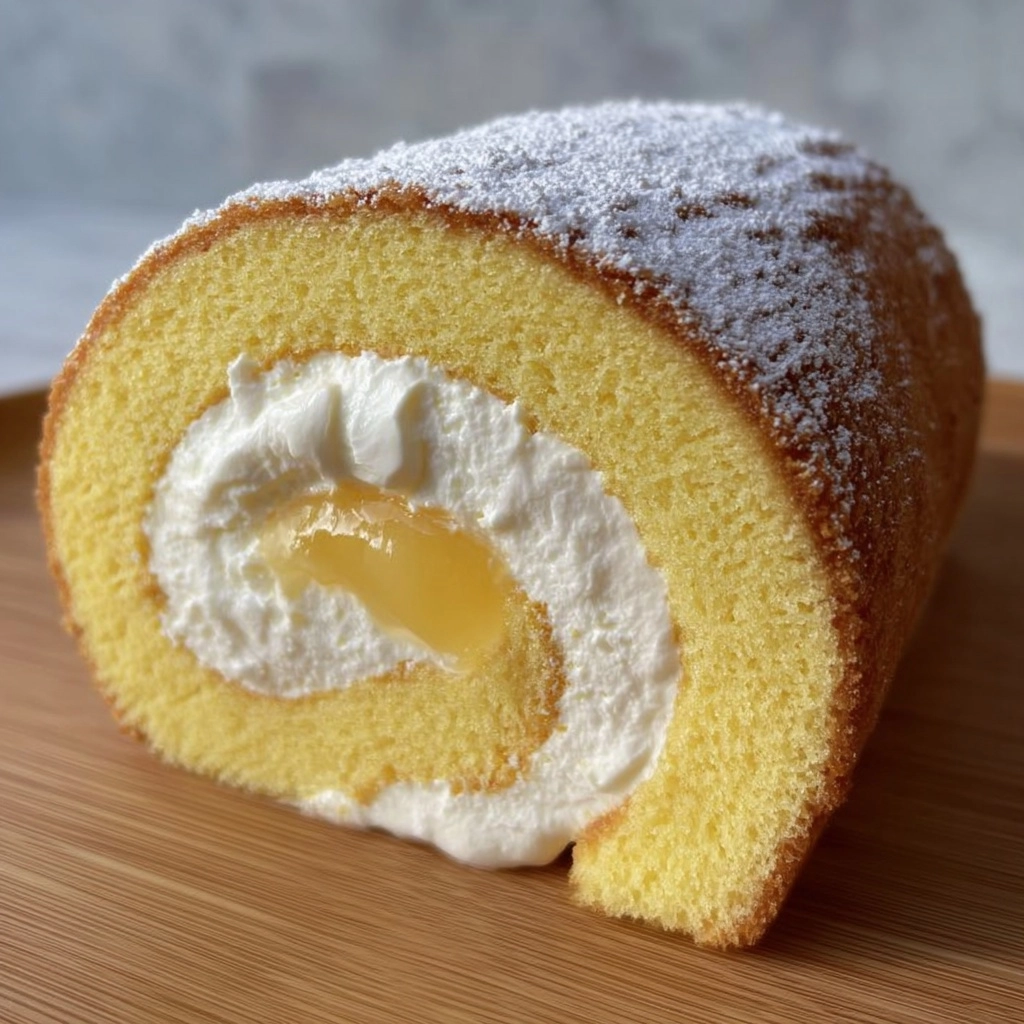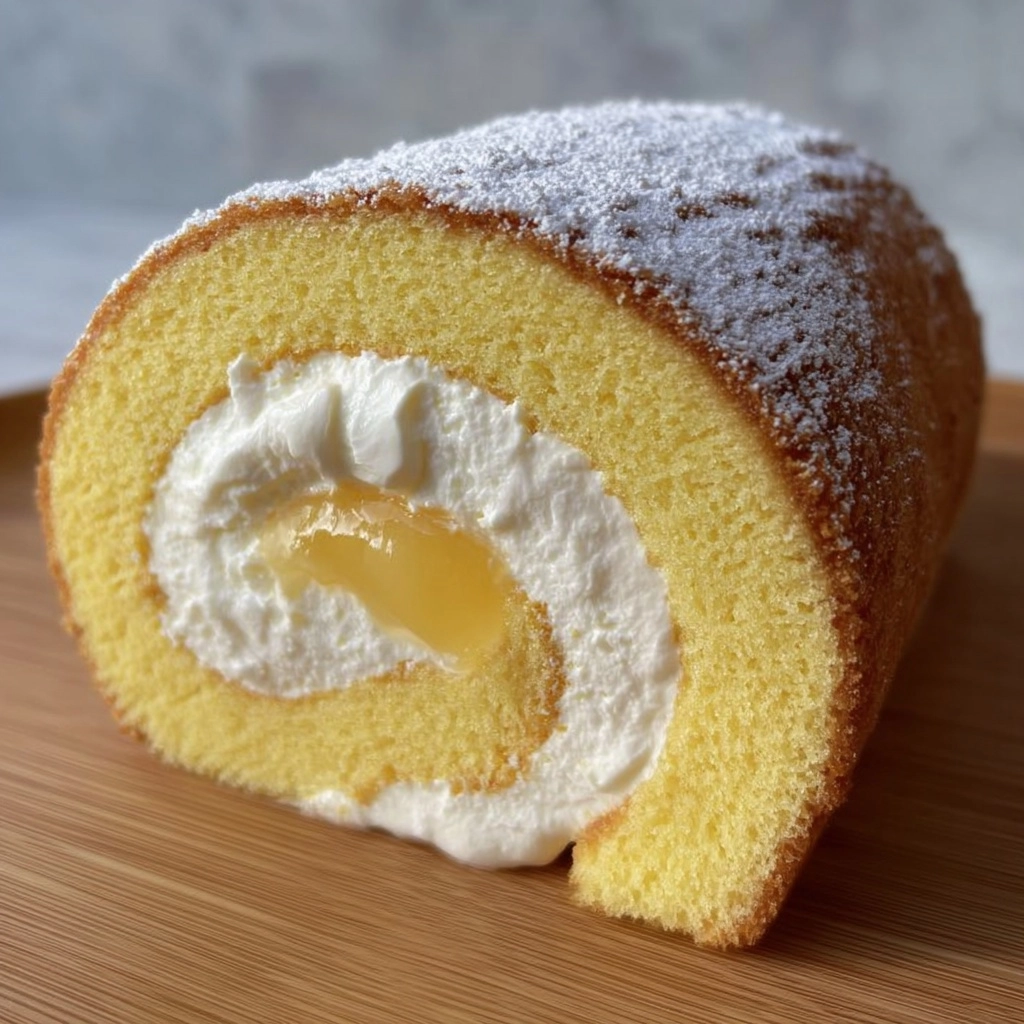If you’re looking to impress with a dessert that’s as stunning as it is scrumptious, you can’t go wrong with a Japanese-style Cream Roll Cake. This delicately airy sponge, filled with fluffy vanilla-scented whipped cream and rolled up into a picture-perfect log, brings a little magic to every occasion. The method is beautifully simple, the taste is light yet rich, and every slice reveals that irresistible swirl of pillowy cake and creamy filling. Once you try this Japanese-style Cream Roll Cake, it might just become your new favorite recipe to share!
Ingredients You’ll Need
This lovely treat requires a handful of kitchen staples, each one playing a key role in achieving the signature lightness and flavor. With just a few quality ingredients, you’ll be on your way to bakery-worthy results right from your own oven.
- Eggs: The foundation of our sponge, eggs not only provide structure but also give the cake its signature springy crumb.
- Granulated Sugar: Sweetens the batter and helps whip the eggs into a thick, glossy foam for an airy texture.
- Cake Flour: Using cake flour keeps the cake exceptionally soft and helps ensure a tender bite.
- Cornstarch: Lightens the flour mixture, making the cake even more delicate and cloud-like.
- Milk: Adds just enough moisture for a silky-smooth batter.
- Vegetable Oil: Contributes to a tender sponge that stays moist and flexible for easy rolling.
- Vanilla Extract: Fragrances both the cake and the cream, bringing comforting warmth to each bite.
- Heavy Whipping Cream: The soul of the filling, yielding a rich and creamy layer to swirl within the cake.
- Powdered Sugar: Sweetens the whipped cream just enough and is perfect for that final snowy dusting.
- Powdered Sugar for Dusting: Optional, but it gives the Japanese-style Cream Roll Cake a lovely, professional finish.
How to Make Japanese-style Cream Roll Cake
Step 1: Prep Your Pan and Oven
Preheat your oven to 350°F (175°C) and line a 10×15 inch jelly roll pan with parchment paper. This pan size is ideal for getting just the right thickness of sponge. Parchment paper not only prevents sticking, it also helps you release and roll the cake beautifully later on.
Step 2: Whip the Eggs and Sugar
In a large mixing bowl, combine the eggs and granulated sugar. Using an electric mixer on high speed, beat the mixture until it turns thick and pale, about 5 to 7 minutes. This step is absolutely essential for the iconic fluffy texture of Japanese-style Cream Roll Cake, so be patient and let the mixer do its magic.
Step 3: Fold in the Dry Ingredients
Sift together the cake flour and cornstarch, then gently fold them into the egg mixture in batches. Use a spatula and a light hand to keep the batter full of air. This is the trick to a feather-light sponge—no dense rolls here!
Step 4: Incorporate the Liquids
In a separate small bowl, mix together the milk, vegetable oil, and vanilla extract. Gradually pour this into the batter, gently folding just until everything is smoothly combined. This keeps the sponge moist, supple, and easy to roll.
Step 5: Bake the Sponge
Pour the batter into your prepared pan, smoothing it out evenly to the edges. Bake for 12 to 15 minutes, or until a toothpick inserted into the center comes out clean. The cake should be lightly golden and springy to the touch.
Step 6: Whip up the Cream Filling
While the cake bakes, combine the heavy whipping cream, powdered sugar, and extra vanilla extract in a chilled bowl. Whip on medium-high speed until stiff peaks form. Then, pop it in the fridge until you’re ready to assemble your Japanese-style Cream Roll Cake.
Step 7: Turn Out and Roll Up the Cake
Once the cake is out of the oven, immediately invert it onto a clean kitchen towel sprinkled with powdered sugar. Gently peel off the parchment paper. This step ensures the sponge won’t stick and the powdered sugar keeps it from tearing as you roll.
Step 8: Pre-roll and Cool
While still warm, roll the cake up in the towel (starting from the short end) and let it cool completely. This creates a “memory” for the sponge, so it won’t crack when filled later.
Step 9: Fill and Final Roll
Once cool, unroll the sponge and spread the whipped cream evenly over the surface. Carefully roll the cake back up (this time without the towel), keeping the swirl tight but gentle to avoid squeezing out all that gorgeous cream.
Step 10: Chill and Dust
Dust the rolled cake with another cloud of powdered sugar, then refrigerate for at least one hour to let the cream set and the flavors meld. Now your Japanese-style Cream Roll Cake is ready to slice and dazzle!
How to Serve Japanese-style Cream Roll Cake

Garnishes
Classic simplicity is best here—dust your Japanese-style Cream Roll Cake with a little extra powdered sugar, or decorate with a few fresh berries and a sprig of mint for a pop of color. Some edible flowers make it extra special for a celebration.
Side Dishes
This cake pairs beautifully with a cup of hot green tea or a delicate fruit salad. For a Japanese-inspired pairing, serve alongside matcha lattes, fresh kiwi, or a little bowl of sweet red bean paste for a true afternoon treat.
Creative Ways to Present
For a wow-worthy display, slice the roll cake into thick rounds and stand them upright on each plate. You can also pipe little rosettes of extra whipped cream on top, arrange them with seasonal berries, or cut into mini rolls for an elegant dessert platter.
Make Ahead and Storage
Storing Leftovers
Wrap any extra Japanese-style Cream Roll Cake tightly in plastic wrap and keep it in the refrigerator. It stays soft and delicious for up to three days. The flavors get even better as they blend together, making leftovers a real treat.
Freezing
If you want to keep your roll longer, you can freeze it! Wrap the uncut cake securely in plastic wrap and then foil. Thaw overnight in the fridge before serving—just remember that whipped cream texture might change a little after freezing, but the taste will still shine through.
Reheating
This creamy cake is meant to be enjoyed cold or at room temperature, so no reheating required. If you’d like to soften it slightly after refrigeration, just let it sit at room temperature for 10 minutes before serving.
FAQs
Can I use all-purpose flour instead of cake flour?
While all-purpose flour works in a pinch, cake flour gives your Japanese-style Cream Roll Cake its famously fine, soft crumb. If you need to substitute, remove two tablespoons of all-purpose flour per cup and replace with cornstarch for a similar result.
Why did my roll cake crack when I rolled it?
The most common cause is rolling the cake when it’s too cold. Always roll it up while it’s still warm using a towel; this prevents cracks and helps the sponge “remember” its shape.
Can I flavor the cream filling differently?
Absolutely! Try adding matcha powder, cocoa powder, or even a drop of almond or citrus extract to the whipping cream for a personalized twist on the Japanese-style Cream Roll Cake.
How do I get perfect slices without squishing the cake?
Use a sharp, hot knife and wipe it clean between cuts. This keeps both the cake and the cream looking neat, with beautiful, defined swirls in each slice.
Is this cake very sweet?
This Japanese-style Cream Roll Cake is lightly sweet, focusing on the pure taste of eggs, milk, and cream. It’s perfect for those who prefer desserts that are elegant and not overly sugary.
Final Thoughts
There’s something special about sharing a lovingly made Japanese-style Cream Roll Cake with friends and family. From the pillowy sponge to the dreamy filling and the elegant spiral reveal, every step is a little celebration of simplicity and flavor. Give it a try, and you’ll discover just how delightful homemade cake can be!




Your email address will not be published. Required fields are marked *